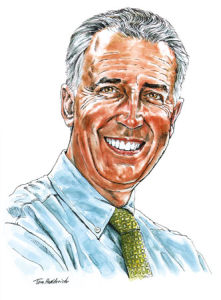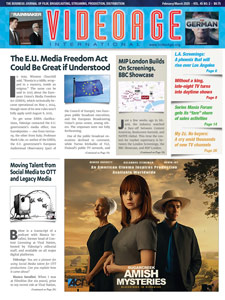Perhaps my old age is starting to interfere with me, but I’m wondering what’s so special about the good ol’ days. Were video cassettes better than today’s streaming promos? Were sales trips more enjoyable with operator-assisted international sales calls? Yes, air travel was more civilized, but is that all?
 By writing the International TV Distribution Hall of Fame features, I cannot help but stop and marvel at how creative, resourceful and dedicated those pioneers were.
By writing the International TV Distribution Hall of Fame features, I cannot help but stop and marvel at how creative, resourceful and dedicated those pioneers were.
But in the process of writing I’m also amazed how the pioneers who are still active after 60 years in the business long for the “good ol’ days.”
VideoAge started reviewing the international TV distribution business from the beginning, starting in 1981. At that time, total annual revenues for international TV sales for U.S. companies were about $1 billion. Last October, a VideoAge article recalled that in 1997, all MPAA members combined generated $2.6 billion internationally, which, adjusted for inflation, makes for $3.87 billion in today’s dollars. In terms of TV/video rights exports, today the U.S. generates an estimated $20 billion a year.
I remember that, as late as the mid-1990s Latin America was seen as a lost cause, with political and financial turmoil, collection problems and low program sales. Now, LATAM can even support four TV trade shows, including NATPE Miami, and five TV trade publications.
Up until 1989, the Eastern European-TV market did not exist, and the Pan-Pacific TV market consisted only of Australia, Japan and South Korea.
In those early years, international program sales were basically to broadcast television, pay-TV and home video, now there are more than seven windows to deal with, and worldwide consumption of TV content has increased exponentially. TV outlets have proliferated and content output has skyrocketed. In its May 1994 Issue, VideoAge reported 64 pilots for the new U.S. TV season. In its April 2016 Issue, VideoAge listed 92 pilots for just the new U.S. broadcast TV season.
In its February 1985 issue, VideoAge wrote, “excluding the U.S., the international broadcast industry requires more than 2,500 aggregate hours of programming per day. Cable-TV, pay-TV and home video demand 200 additional daily programming hours.” Today it’s hard to imagine, let alone calculate, how many aggregate video hours are needed. Indeed, we went from, “There is nothing on TV tonight,” to “There is too much on TV, I can’t keep up.”
Then, local sales visits took weeks, combining several territories and with international calls to offices and families made through time-consuming telephone operator switchboards. Now we have Skype and Whatsapp. But more startling is how those pioneers actually traveled, packing stacks of video cassettes and, before that, film reels and projectors.
For sure these were not easy tasks, with low-paying salaries, long working hours, months away from families, and yet, for them those were the good ole days.
If I have to find a reason for this attitude, I cannot help but think of a few elements: a simple, enjoyable job without pressure, a smaller industry and camaraderie among both buyers and competitors.
Dom Serafini
Audio Version (a DV Works service)











Yes. Well said. Great retrospective for the best independent trade news in the business!